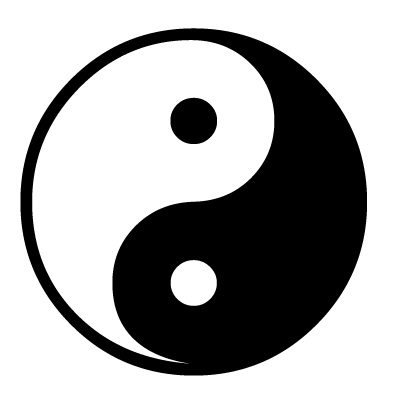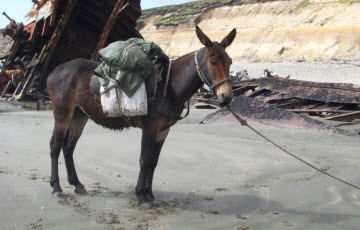NOTE: Like
many people in the grinding business of understanding the stock market
and finding value in financial markets "The Stress of Life" by Dr.Selye
held an important place in my life. He made it clear that distress is
the great enemy. If you are enjoying the 'Battle for Investment
Survival' as you would a game, you are not risking "getting sick" from
the distress of the activity. He talks about stress as a good and
motivating force whereas distress is the killer. Good stress would
probably be considered "Flow" by Mihaly Csikszentmihalyi:
|
|
|
|
Oct 24, 2008 ... http://www.ted.com Mihaly
Czikszentmihalyi asks, "What makes a life worth living ?" Noting that
money cannot make us happy, he looks to those ...
|
www.youtube.com/watch?v=fXIeFJCqsPs |
|
|
BrainConnection.com - Hans Selye and the Discovery of Stress - Part 1  Hans Selye: The Discovery of Stress
Hans Selye: The Discovery of Stress
by Gerald Gabriel G.A.S. Spells Stress
As
with so many wondrous discoveries of science and medicine, it was by
chance that Hungarian-born Hans Selye (1907-1982) stumbled upon the idea
of the
General Adaptation Syndrome (G.A.S.), which he first wrote about in the British journal Nature in the summer of 1936.
The G.A.S., alternately known as the
stress syndrome, is what Selye came to call the process under which the
body confronts "stress" (what he first called "noxious agents").
In the G.A.S.,
Selye explained, the body passes through three universal stages of coping.
1)
First there is an "alarm reaction," in which the body prepares itself
for "fight or flight." No organism can sustain this condition of
excitement, however,
2) and a second stage of adaptation
ensues (provided the organism survives the first stage). In the second
stage, a resistance to the stress is built.
3) Finally,
if the duration of the stress is sufficiently long, the body eventually
enters a stage of exhaustion, a sort of aging "due to wear and tear."
"Stress,"
in Selye's lexicon, could be anything from prolonged food deprivation
to the injection of a foreign substance into the body, to a good
muscular workout; by "stress," he did not mean only "nervous stress,"
but "the nonspecific response of the body to any demand." Though
his efforts were met with skepticism early on (he did suggest some
fairly radical things, including the idea that stress had a causal
relationship to a number of major illnesses - heart disease and cancer,
among them), Selye's impeccable methods and research
gradually won out, and his ideas were eventually treated with respect by
health and science professionals of every stripe.
In Selye's
own words, his discovery was just "enough to prevent the concept from
ever slipping through our fingers again; [making] it amenable to a
precise scientific analysis."
Stressed-out Lab Rats Selye
had actually been searching for a new hormone when he stumbled upon all
of this. In 1934, at the age of 28, he was an assistant at McGill
University's Biochemistry Department in Montreal. He was a promising
young endocrinologist carrying out quite orthodox biochemical
experimentation involving the injection of rats with ovarian extract.
His hope was to uncover changes in the organism that could not be caused
by any known sex hormone, and the initial results gave him cause for
great optimism.
The rats developed a triad of symptoms from the
extract injections, including enlargement of the adrenal cortex, atrophy
of the thymus, spleen, and lymph nodes, and deep bleeding ulcers in the
lining of the stomach and duodenum -- all of which could be increased
or decreased in severity by adjusting the amount of extract.
It
seemed obvious to the young Selye that he was on the verge of
pinpointing a new hormone, as none then known produced these sort of
symptoms. "You may well imagine my happiness!" he writes. "At the age of
28, I already seemed to be on the track of a new hormone."
His
hopes began to diminish, however, when, first, placental extract and,
later, pituitary extract brought about the same symptoms. But he was not
yet defeated, for, he writes, "mine was supposed to be a new hormone
and (who knew?) perhaps the pituitary could also manufacture this one."
Next,
however, he injected the extract of kidney, spleen and numerous other
organs, all of which produced the same effect. He was baffled. In a last
ditch effort to clarify these bizarre results, he injected a toxic
liquid, Formalin, (used in the preparation of tissues for microscopic
study) and when even it produced these symptoms, he knew he had failed
in discovering a new hormone.
The Unique View Afforded to the Young and IgnorantHe
was left, at this point, with two options. The first and most apparent
was to give up on this line of research. There was plenty of reason to
believe that this trail would lead to nothing of worth, and, he knew,
many capable scientists had wasted their best years being led around by
just such a red herring. "I became so depressed that for a few days I
just sat in my laboratory," he writes, "brooding about how this
misadventure might have been avoided and wondering what was to be done
now."
The other, much more difficult, possibility was to devise
some new way of examining his data. This, of course, is the option he
chose.
Selye
revisited a theory he first began to formulate years before at the
German-speaking University of Prague, where, at the age of nineteen, he
began medical school. It was here that Selye unwittingly developed ideas
that would eventually lead to the discovery of the G.A.S. Selye
recalled years later that as the various patients were brought in and
examined during his introduction to clinical medicine, they all "felt
and looked ill, had a coated tongue, complained of more or less diffuse
aches and pains in the joints, and of intestinal disturbances with loss
of appetite." They also generally "had fever, enlarged spleen or liver,
inflamed tonsils, a skin rash" and a number of other general symptoms.
It wouldn't be until later that the telltale signs would appear of, say,
liver disease, and treatment could be recommended.
"Since
these were my first patients," Selye writes, "I was still capable of
looking at them without being biased by current medical thought. Had I
known more I would never have asked myself questions, because everything
was handled just the way it should be."
The
main question that stuck in Selye's mind was a simple one really: how
was it that doctors over the long history of medicine had spent so much
time and energy on the discovery and treatment of individual diseases
and had given discovery and treatment of individual diseases and had
given so little thought to:
"the syndrome of just being sick"?
Though
captivated by this idea, being young and inexperienced - and working
under the deadlines and demands of medical school - Selye hadn't the
time, energy or expertise to pursue it. He briefly mentioned the idea to
his advisor who promptly chuckled at the young mans naivete, and thus
the idea fell dormant for the better part of the next decade.
On "the Syndrome of Just Being Sick" and Bloodletting
The memory of the nonspecific illness did not altogether abandon
Selye, though, and years later, when he was casting around for a rubric
under which he could examine his failed hormone experiments, he was
reminded of the symptoms of the patients in the Prague hospital.
Those patients, he understood, shared something in common with his sick
rats. His intention was to find out what that connection was, and he in
fact decided very quickly to devote his life to the discovery of the
root of this nonspecific illness.
"If there was such a thing as a single nonspecific reaction of the body
to damage of any kind," he writes of his jubilant epiphany, "this might
be worth study for its own sake. Indeed, working out the mechanism
of this kind of stereotyped syndrome of response to injury as such might
be much more important to medicine than the discovery of yet another
sex hormone."
In piecing together the puzzle, Selye was aided by two other bits of medical knowledge. Certain treatments, he knew, were useful to patients suffering from just about anything. Doctors
prescribed to most patients things like rest, eating easily digestible
food, and protection against great variations in temperature. Also, he
recalled that there existed a number of nonspecific treatments in the
history of medicine - and, in fact, in contemporary medicine, too -
that, though odd (some would say barbaric), had met with undeniable (if
sporadic) success: practices like the injection of foreign substances
into the body, fever therapy, shock therapy, and bloodletting. It didnt take long for Selye to formulate an idea that made all of this seemingly disparate information coalesce.
There was some mechanism in the body, he rightly surmised, whose response to external agents - "noxious agents" was the best term he could then muster - was somehow general.
The quality of just being sick he had seen in the Prague
patients, the shared symptoms in his experimental rats, the universal
usage of certain treatments, as well as the successful practice of
stressful remedies like shock therapy, when taken together, suggested
that specific illnesses, if not wholly caused by a single influence,
were certainly
bound
by similar forces; there was a link in the body's reaction to illness
that gave the appearance of some internal mechanism combating the
stressing agents.
The Hypothalamus-Pituitary-Adrenal System
Selye's genius, then, was in suspecting and, through research, identifying
this complicated internal stress-processing mechanism, which came to be known as the hypothalamus-pituitary-adrenal system.
This system, in short, governs the amount and kind of response the body produces to combat a stressing agent.
Simplified,
the hypothalamus (the bridge between the brain and endocrine system)
sends a message to the pituitary gland (a hormone-producing gland
embedded in bones at the base of the skull) to release ACTH
(adrenocorticotrophic hormone) into the blood stream. This signal
prompts the adrenal cortex (located above the kidneys) to create
corticoids, another hormone, from available raw material. These
corticoids are then dispersed to the places in the body they are needed,
where they are put to use in the various stages of
defense against a stressing agent.
This was the fruition of Selye's goals: the identification of stress based upon "demonstrable biological laws."
Sometimes
a discovery is in part remarkable for the fact that nobody has made it
before; this was just such a discovery. It "could have been discovered
during the Middle Ages,"
writes
Selye. "[Its] recognition did not depend upon the development of any
complicated pieces of apparatus, but merely upon an unbiased state of
mind, a fresh point of view."
The Legacy
With the knowledge of the G.A.S. and hypothalamus-pituitary-adrenal
system, it was all of a sudden possible to begin gauging the role of
stress in our lives - which is precisely what Selye and a multitude of researchers have been doing for the last half century.
Selye
himself went on to publish 33 books and over 1,600 scientific articles,
almost all of them on the subject of stress. Among his many scientific
texts, he also wrote a handful of popular books intended to educate
about stress, the most popular of which was
The Stress of Life, an in-depth explanation of the stress syndrome and its origins. Selye
served as professor and director at the Institute of Experimental
Medicine and Surgery at the University of Montreal from 1945 until
retiring in the mid-1970s. But he also evolved into a sort of
philosophical
leader whose views on health helped to change the way the body and mind
were viewed in the decades after World War II.
Selye moved easily into the role of well-being representative,
and was just as likely to be asked to speak to a religious group as to a
medical group
.
He often spoke of the value of love, and of the essential importance in our own well-being of helping others.
He
was not, at any point in his career, anyone's vision of a "normal"
scientist. But he was indeed an innovator, and his influence stretches
behind him still, nearly twenty years after his death, as his students
and colleagues continue to toil in the wake of his ideas.

This article was created by Scientific Learning.
http://www.scientificlearning.com


BrainConnection.com is a Web resource from
Posit Science Corporation






 This article was created by Scientific Learning.
This article was created by Scientific Learning.

